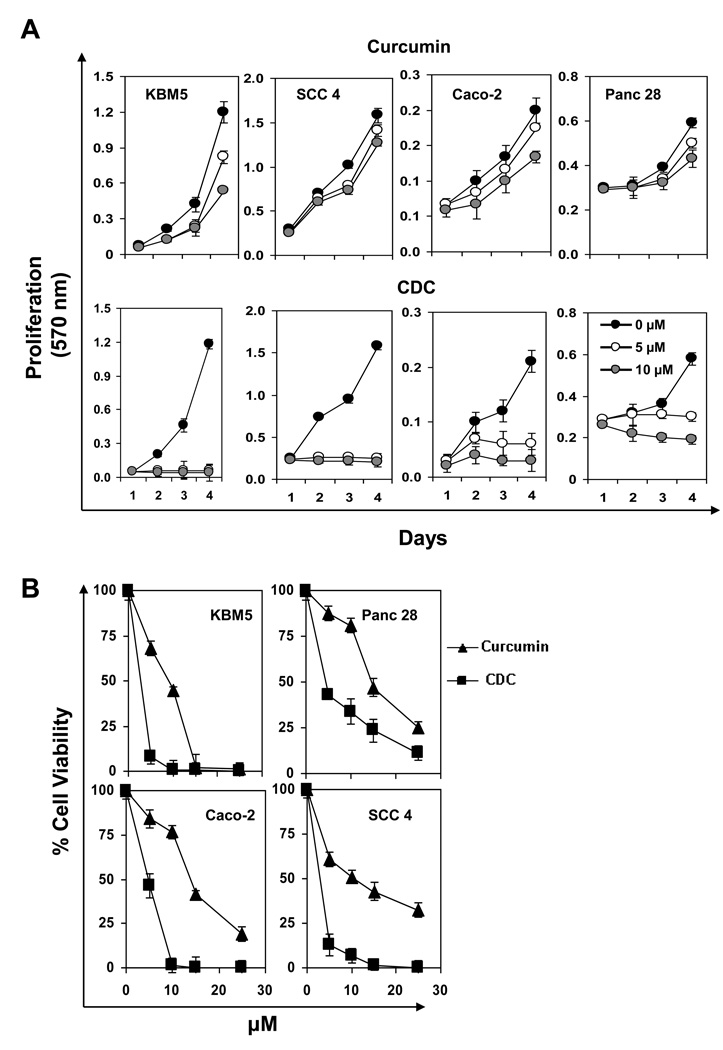Figure 3.
(A) Effect of CDC and curcumin on proliferation/survival as assessed by the 3-(4,5-dimethylthiazol-2-yl)-2,5-diphenyltetrazolium bromide (MTT) assay. CDC is more active than curcumin in suppressing proliferation at different days. (B) CDC showed more cytotoxic in different cancer cells. KBM-5 (human chronic myeloid leukemia), SCC-4 (human tongue squamous cancer), Caco-2 (human colonic carcinoma), and Panc-28 cells (pancreatic cancer) were incubated with different concentrations of either curcumin or CDC in for 72 h and then examined for cell viability by the MTT method. The results show the mean ± SD values.

